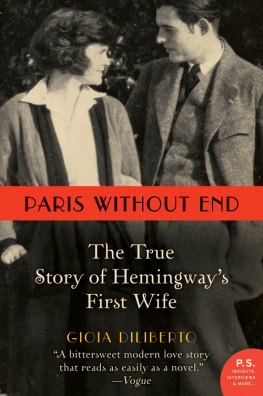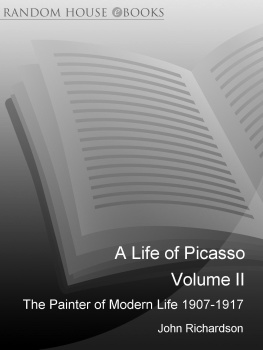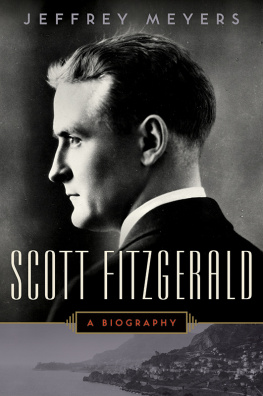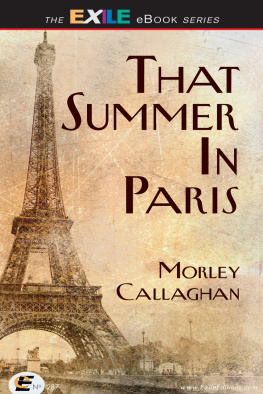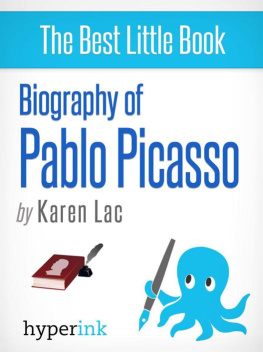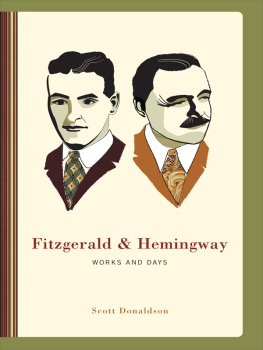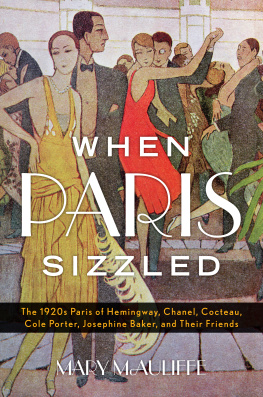It wasnt the parties that made it such a gay time. There was such affection between everybody. You loved your friends and wanted to see them every day, and usually you did see them every day. It was like a great fair, and everybody was so young.
Sara Murphy to Calvin Tomkins
in Living Well Is the Best Revenge
Copyright 1998 by Amanda Vaill Stewart
All rights reserved
For information about permission to reproduce selections from this book, write to Permissions, Houghton Mifflin Company, 215 Park Avenue South, New York, New York 10003.
The Library of Congress has cataloged the print edition as follows:
Vaill, Amanda.
Everybody was so young : Gerald and Sara Murphy
a lost generation love story / Amanda Vaill.
p. cm.
Includes bibliographical references and index.
ISBN 0-395-65241-3
1. Murphy, Gerald, 18881964. 2. PaintersUnited StatesBiography. 3. Murphy, Sara. 4. Painters spousesUnited StatesBiography. 5. Expatriate paintersFranceBiography. I. Title.
ND 237. M 895 V 35 1998 759.13dc21 97-49149 [ B ] CIP
e ISBN 978-0-544-26894-4
v2.0814
TEXT AND ILLUSTRATION CREDITS BEGIN ON .
In memory of my mother
PATRICIA VAILL
Prologue
Antibes, May 28, 1926
I T WAS THEIR FRIEND Scott Fitzgerald who described the Murphys best, on the beach at Antibes in the south of France, in the summer sun of the 1920s. There is Sara, her face hard and lovely and pitiful, her bathing suit pulled off her shoulders and her brown back gleaming under her rope of pearls, making out a list of things from a book open in the sand. And there is Gerald, her husband, tall and lean in his striped maillot and a knitted cap, gravely raking the seaweed from the beach as if performing some esoteric burlesque, to the delight of the little audience of friends they have gathered around them. On the bright tan prayer rug of the beach, they and their friends swim, sunbathe, drink sherry and nibble crackers, trade jokes about the people with strange names listed in the News of Americans in the Paris Herald: Mrs. Evelyn Oyster and Mr. S. Flesh. Their very presence is an act of creation; to be included in their world is, Fitzgerald says, a remarkable experience.
Fitzgerald wasnt literally portraying the Murphys, of course; he was writing a novel, called Tender Is the Night, about a psychiatrist named Dick Diver and his wife, Nicole. In the novel, the woman with the pearls is recovering from a psychotic break brought on by incest, and the man with the rake ends up losing his wife, his position, everything he most cares about. These things are not known to have happened to Gerald and Sara Murphy. So when Fitzgerald insisted to Sara, after the publication of Tender Is the Night in 1934, that I used you again and again in Tender, Saras reaction was denial and distaste. I hated the book when I first read it, she told her neighbor, the writer Calvin Tomkins. I reject categorically any resemblance to ourselves or anyone we knowat any time. But Gerald made the connection at once. I know... that what you said in Tender is the Night is true, he wrote Fitzgerald in 1935. Only the invented part of our lifethe unreal parthas had any scheme any beauty.
By that time the life the Murphys had invented at their Villa America in Antibes, and in Paris during the 1920s, may indeed have seemed unreal. In the intervening years tragedy had tarnished the Murphys lives: the death of one child, the mortal illness of another, Geralds forfeiture of his career as a painter; a whole litany of loss. But on May 28, 1926, those events are in the future, and the invented part of the Murphys lives is as real, as palpable, as the hot sand under their feet or the throbbing of cicadas or the color of the seaan improbable turquoise in the shallows, and a deep, purplish blue, the color of blueberries, farther out.
The beach, La Garoupe, is literally Geralds invention: Until a year or so ago, it was covered in seaweed and stones, and deserted except for the fishermen who pull up their little boats there. But Gerald saw its possibilities when the Murphys first stayed in Antibes in the summer of 1922 with Cole Porter and his wife, Linda. Gerald and Cole raked the debris from a corner of the sand, and in the years since Gerald has cleared the entire plage almost single-handed. Now what began as a private Murphy passion has caught onnot, it should be noted, with the local inhabitants, who cannot understand why anyone would want to go out in the midday heat and actually lie in the sunbut with fashionable Parisians and increasing numbers of visiting Americans and English from the huge fin de sicle hotel at the end of the Antibes peninsula, which has only recently extended its season into the summer months.
In fact, the beach has been rather crowded today: Anita Loos, the smart young American screenwriter and author of Gentlemen Prefer Blondes, is there; the playwright Charles MacArthur; Ada MacLeish, the soprano, with her two children, Mimi and Ken (Adas husband, the poet Archibald MacLeish, is still in Persia with the League of Nations Opium Commission); and Scott and Zelda Fitzgerald, who have made a rare sortie from their villa at Juan-les-Pins on the other side of the peninsula, Scott nursing a hangover and Zelda not speaking to him. Absent today, although they are often here, are Comte tienne de Beaumont, the long-faced French aristocrat who was the model for the eponymous hero of Raymond Radiguets scandalous roman a clef, Le bal du Comte dOrgel, and his wife, dith (who, its whispered, has an opium habit). As is their custom, the Murphys arrived with their three children and their nanny late in the morning, after Gerald has completed the days work on one of the precise and unsettling paintings for which he has become famous, and they have been holding a kind of impromptu party ever since, with cold sherry and little biscuits called sabls at noon. Now they are leavingit is lunchtime. And they have arranged to take Hadley Hemingway, wife of the young American writer Ernest Hemingway, to pick up her husband at the Antibes railway station after lunch.
By rights, Hadley should be in Madrid with Ernest, who went there to work on a new novel, and the Hemingways one-year-old son, John, nicknamed Bumby, should have been staying with the Murphys. But before Hadley could get away, Bumby was diagnosed with whooping cough, and Sara, who swathes the railway compartments that she and her family travel in with sheets washed in Lysol to protect her children from germs, thought it best that the little boy and his mother be quarantined until the disease has run its course. Luckily, the Fitzgeralds were able to lend Hadley their rented house in Juan-les-Pins, the Villa Paquita, which they have vacated in favor of a much grander property nearby. And Gerald and Sara, insisting that Hadley and Bumby are their guests, have been paying Bumbys doctor bills and Hadleys other expenses.
When Ernest steps off the train at the Antibes station this afternoon he is met by four people: Hadleys friend Pauline Pfeiffer, as small and dark and slender as Hadley is fair and large-boned, is also standing on the platform. Pauline is an editor at Vogue in Paris, and because she has already had whooping cough it holds no terrors for her. She has been staying with Hadley during this quarantine and has become a great favorite with the Murphys, who admire her stylishness and quick wit. She is a great favorite with Ernest, tooin fact, the two of them have been having a secret affair that began last winter. But the Murphys dont know this and Hadley only suspects it; and if the greeting Ernest gives his wife seems a little awkward, everyone puts it down to his exhaustion (he has had to change trains three times on the journey from Madrid), Hadleys own weariness after weeks of tending a sick child, and the lack of privacy.
Next page


